
British Cycling is considering taking legal action over potential patent infringements from the new bikes of the Japanese Track Cycling Federation and French Track Cycling Federation.
Cycling Weekly understands the potential infringements relate to the wide fork and seat stay designs on the Look P24 and V-IZU TCM. This design concept, which was first seen on the Tokyo 2020 Hope x Lotus track bike, received a patent ('Improvements in or relating to cycles') for many of its design elements back in April 2022.
With the Homologation deadline for the Paris 2024 Olympic games now past, potential legal action could result in both the Look P24 and V-IZU TCM not being allowed use for competition, with no time left for the bikes to be redesigned.
British Cycling told Cycling Weekly that they are aware of potential patent infringements. When asked if legal action is likely to be taken, head of performance Stephen Park said: “There might well be.”
What has British Cycling protected?
When the first Hope x Lotus track bike was released in 2019, it received much attention in the media around its peculiar-looking ultra-wide fork blades and seat stays. The idea behind the strange design is to align these parts of the bike with a rider’s legs in order to carefully direct airflow around the rider - which, when we visited the Hope factory back in 2021, Pendred told us was around “2-3%” quicker.
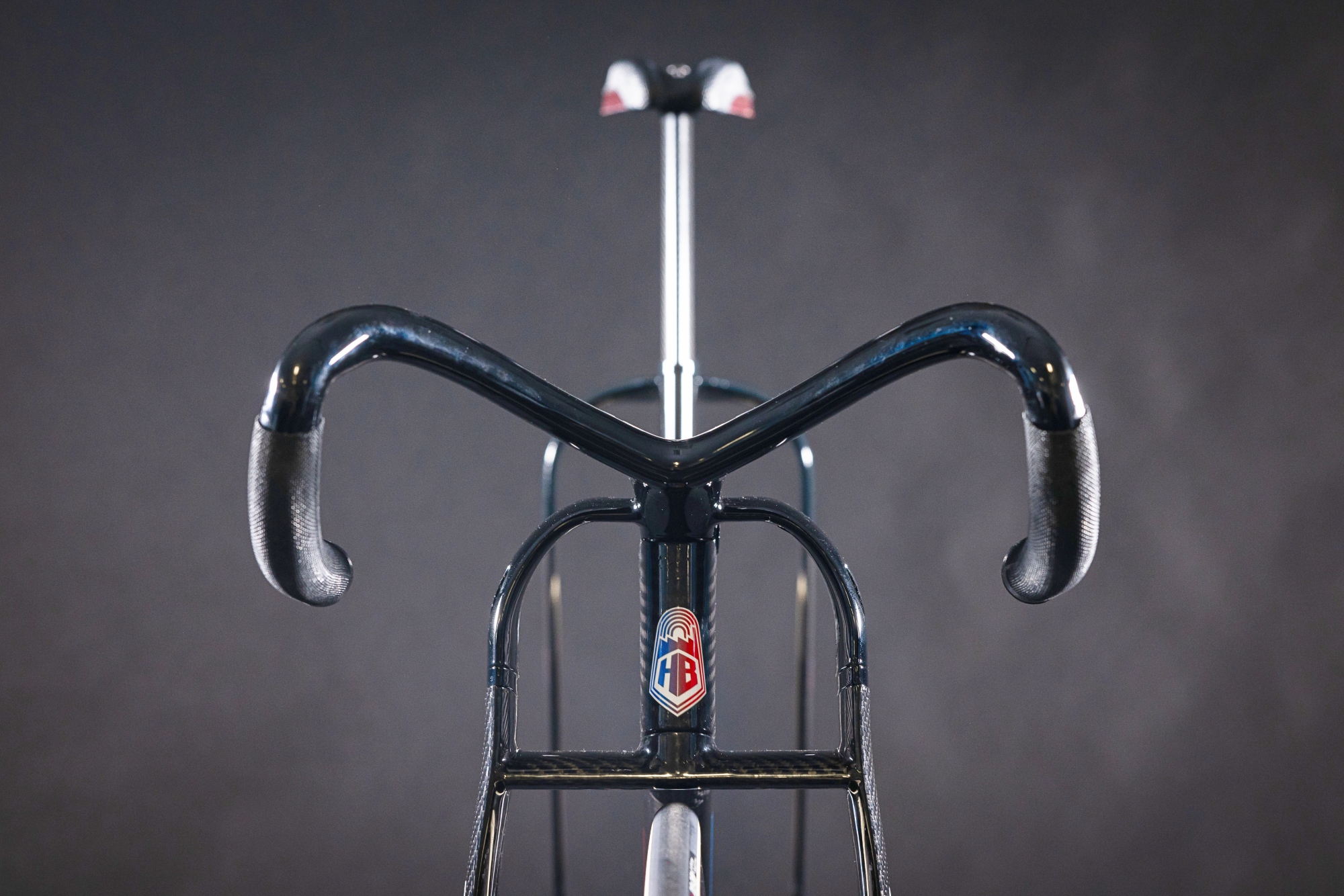
This is the first major claim in the Patent which was granted in April 2022: “ A bicycle comprising a pair of front forks, each fork extending downwardly and substantially parallel to each other from a crown, the forks widely spaced apart from each other and a wheel mounted therebetween, wherein the widely spaced forks are each aligned with the axis of the lower leg of a rider in a normal riding position”.
Essentially, British Cycling has protected aligning the fork blades and seat stays with a rider's legs - claim 2 further outlines that this is applicable for widths of 180-240mm.
In reference to the design of the front fork crown, claim 7 outlines a “bicycle as claimed in any proceeding claim wherein the crown comprises of one or more lateral members” - this, it would seem lays reference to the double crown fork in the Hope x Lotus design.
Claims 5 and 6 state explain a fork blade made of two parts, a primary “substantially linear member and a secondary portion connecting the primary portion to the axle receiving slot” - a particularly important detail for the Look P24, which we will come onto.
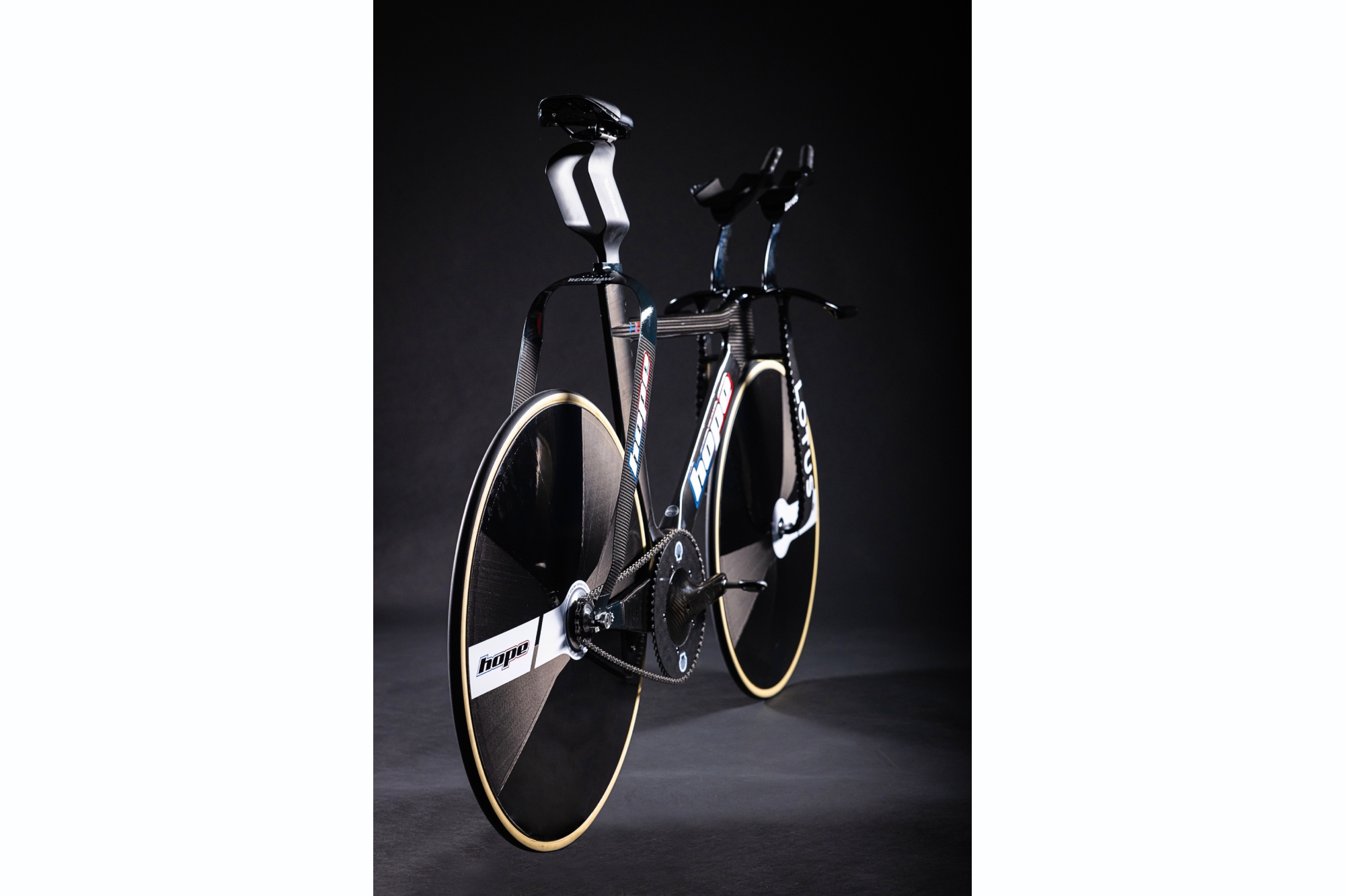
As for the seat stays, claim 12 outlines: “A bicycle as claimed in any proceeding claim wherein the bicycle comprises a pair of seat stays, each seat stay extending downwardly and substantially parallel to each other from a crown, the seat stays widely spaced apart from each other and a wheel mounted therebetween, wherein the widely spaced seat stays are each aligned with the axis of the lower leg of a rider in a normal riding position”.
This is also in reference to “stay spacing that is in the range 170-240mm”, which on the surface at least looks similar to that of the Japanese and French bikes.
What are the potential infringements?
Cycling Weekly spoke to personnel in both the Japanese and French federations, who both said their bikes were designed with the patent in mind.
V-IZU TCM
At a glance, the Japanese V-IZU TCM looks the most similar to the Lotus x Hope bike, so let’s start there.
Starting with the front end, both bikes share similarities both in the width of the forks, and the multiple lateral elements at the fork crown - both of which could be problematic for the Japanese Cycling Federation. As well as this, the fork blades are made up of what looks like two elements, with the secondary part tapering into the front wheels axle - but this is hard to precisely gauge, without more in-depth photos.
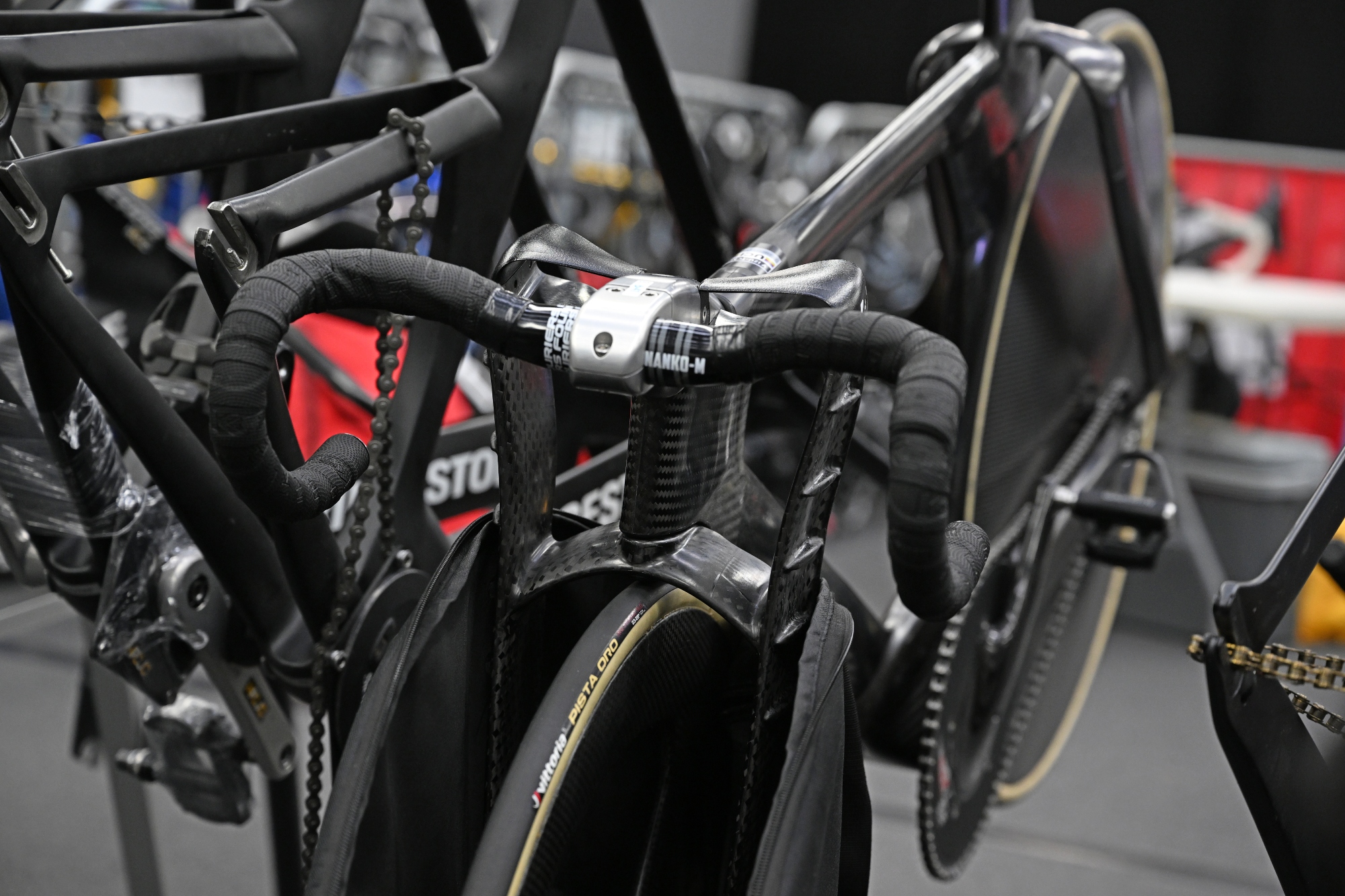
Also worth noting is that the forks on the V-IZU TCM look slightly narrower than that of the Hope x Lotus track bike. Although Cycling Weekly was not able to measure the forks, and therefore it is purely speculation as to whether the design falls into the realm of the 180-240mm width that British Cycling seems to have protected.
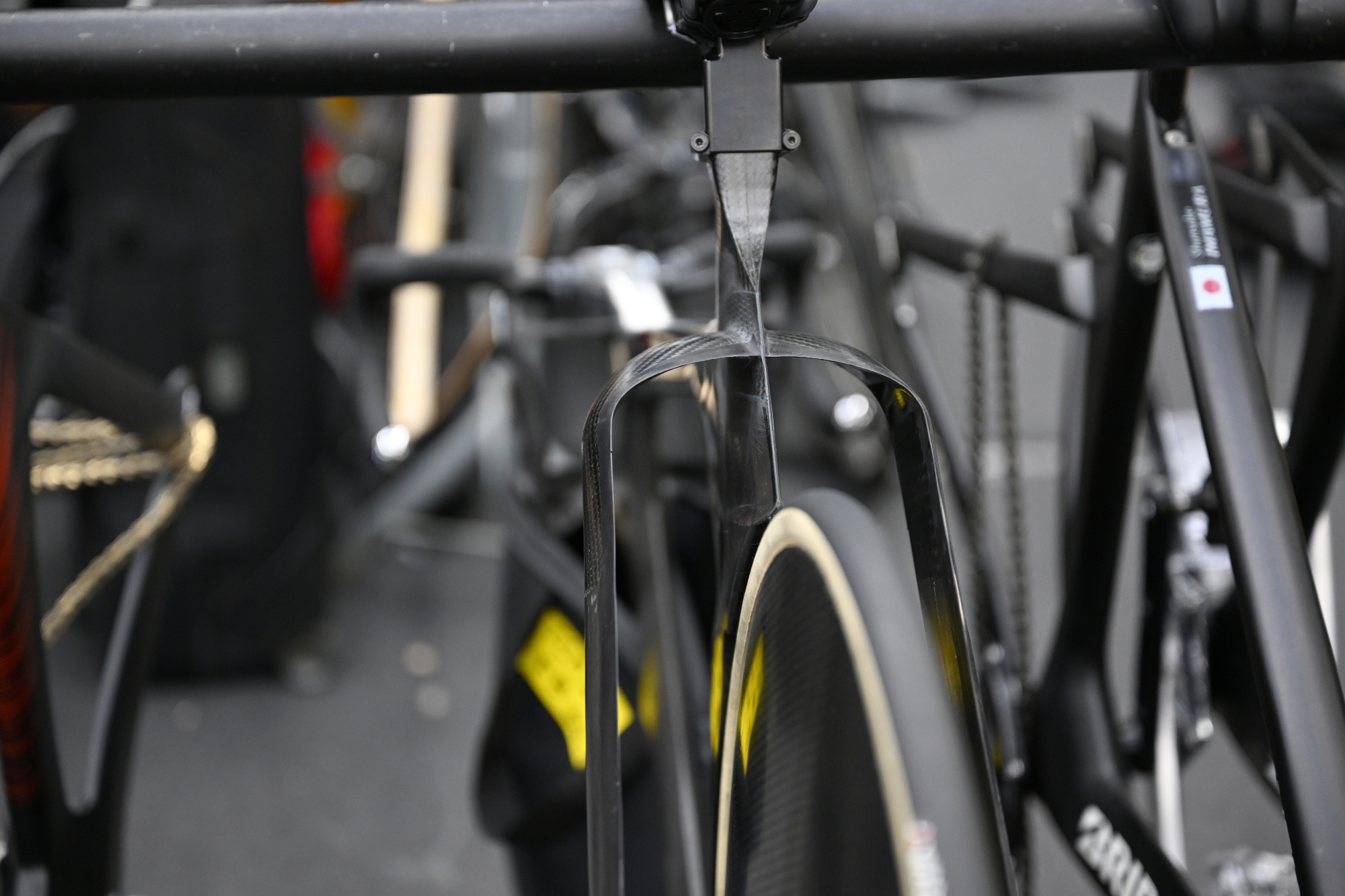
At the rear of the bike, the V-IZU TCM does seem to have two seat stays that are substantially parallel to one another and are again much wider than that of a conventional frame. This could suggest a potential infringement, but it is important that we note there are always loopholes in designs, and Cycling Weekly has not yet received confirmation from the Japanese Cycling Federation as to what considerations to the British Cycling design were taken into account.
Look P24
The Look P24 is a much more confusing case. The fork crown is a much more standard design with only one lateral element, and the fork blades themselves also look to be made of only one-piece, rather than the two-piece design of the Hope x Lotus bike. The most obvious issue here is that the forks still look very wide, however once again Cycling Weekly was not able to specifically measure the width of the forks.
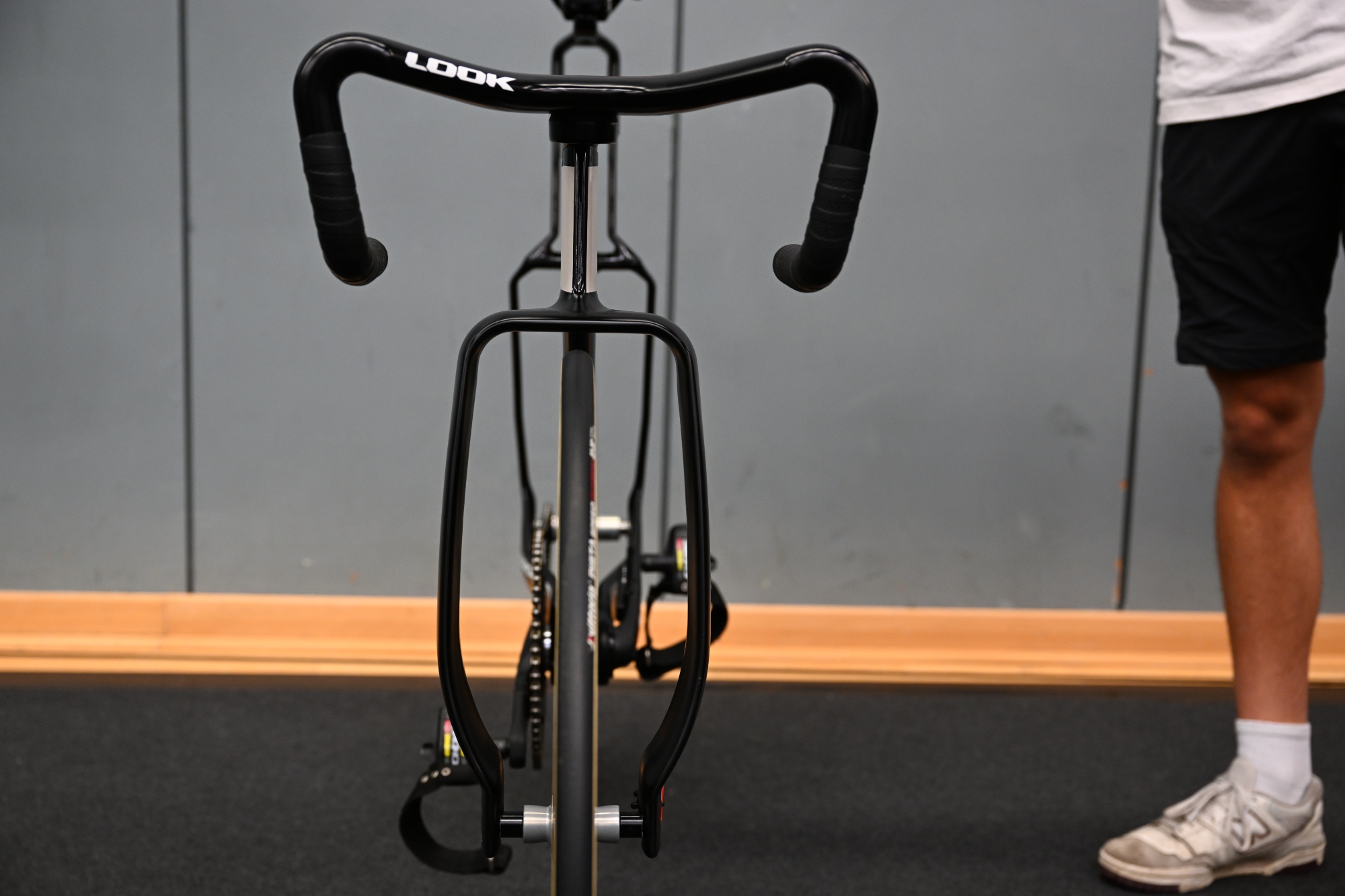
The Look P24 also made headlines with its whacky dual seat post design, which once again could blur the lines of the British Cycling Patent. Though the seat stays extend down substantially parallel to one another and have a wheel mounted in between, the seat stays have a less obvious crown as they extend into seat posts. There is however what could be considered a ‘crown’ at the seat tube junction, but it is not the only point where the seat stays converge.
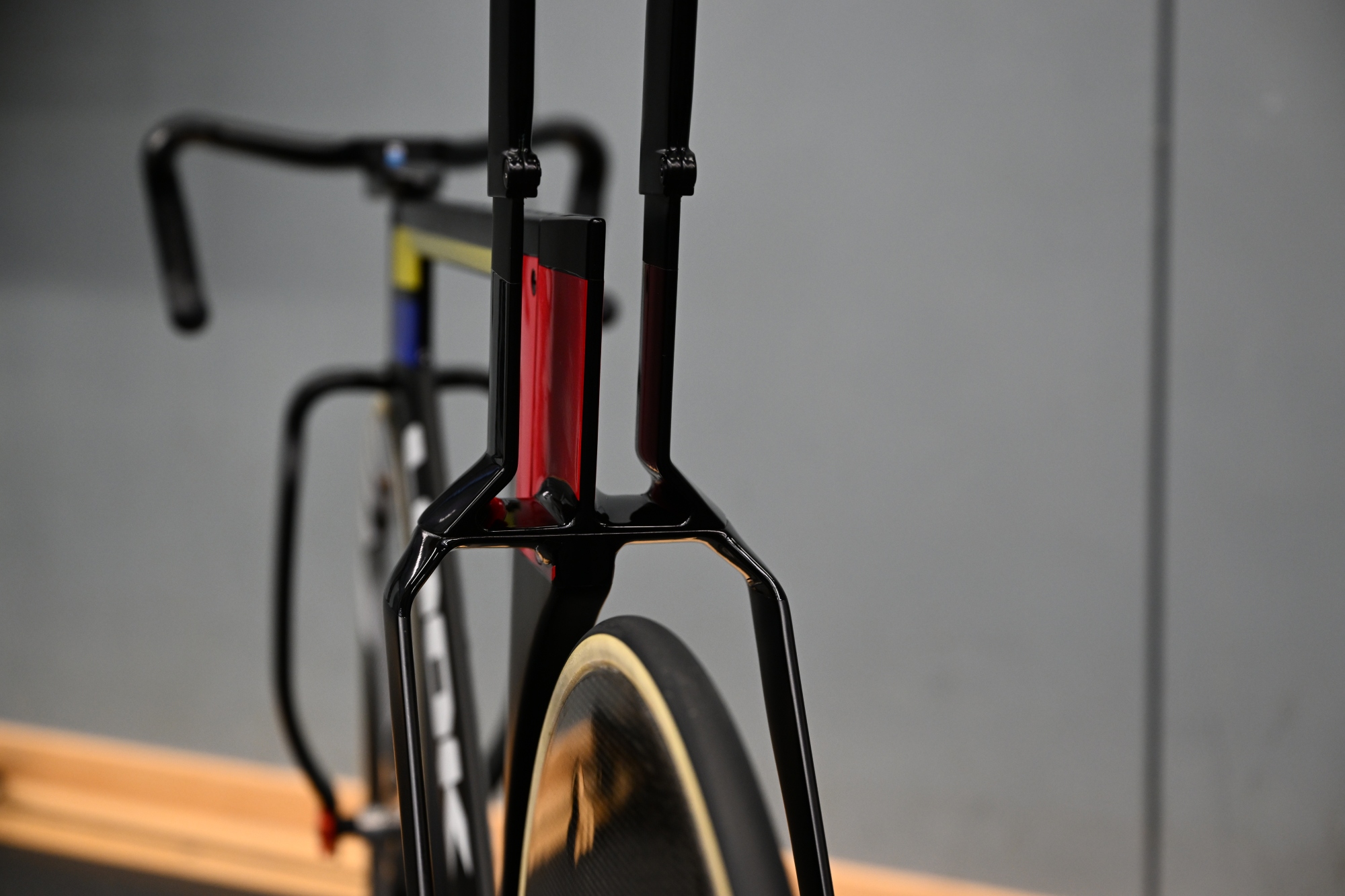
Whether this design was to exploit a loophole in the British Cycling patent, or simply just the fastest design that Look and the French Cycling Federation found is up for debate, but when Cycling Weekly asked the French team mechanics whether it was tricky to design the bike around British Cycling’s patent, they responded “Yes”.
What could this mean for the bikes?
Cycling Weekly understands that at the time of writing, British Cycling has not issued the Japanese or French cycling federations with cease and desist letters, but is considering possible legal action. This means that at present, no formal allegations have yet been tabled.
That said, if British Cycling does choose to mount a legal challenge on the use of the bikes, then the process would become much more confusing. It seems obvious that the worry for the alleged infringing teams is that with no time left to homologate a new design, the innovations rolled out in the 2023 World Championships in Glasgow could be legally disallowed for the Paris 2024 Olympics.
This hinges on two things, British Cycling mounting a legal challenge, and British Cycling winning their challenge - neither of which are likely to happen overnight. A legal battle would also cost British Cycling time and money, so whether British Cycling sees the Japanese and French teams as big enough rivals will also likely be considered.
Cycling Weekly contacted both the French and Japanese federations for comment, and will update this article if and when they respond.







